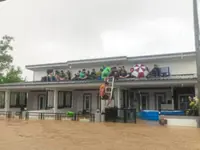The ‘mama mama bambu’ in Ngada, Flores Island, East Nusa Tenggara province in Indonesia who create and nurture seedlings that will be used to restore degraded land under the Bamboo Village Initiative project by the Environmental Bamboo Foundation. Photos: Ulet Ifansasti/EBF
By the time he was 10, Arief Rabik could name 1,000 species of bamboo.
After all, his late mother Linda Garland was widely known as the “Queen of Bamboo”. Garland, an Irish-born interior designer, was highly regarded for her sustainable and ecological works, having designed luxury abodes for celebrities and personalities like Mick Jagger, Richard Branson and David Bowie.
Already a subscriber? Log in
Save 30% OFF The Star Digital Access
Cancel anytime. Ad-free. Unlimited access with perks.





